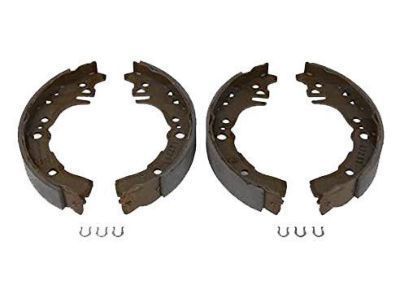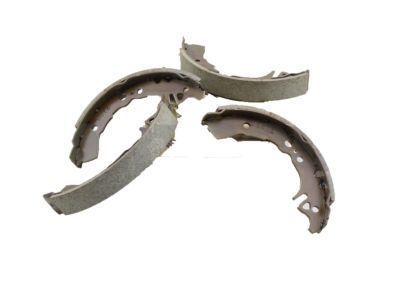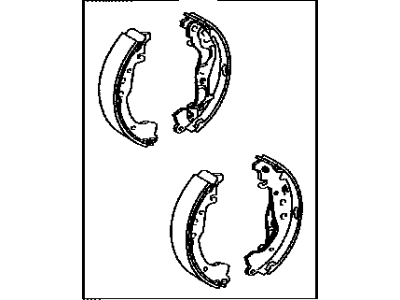

My Garage
My Account
Cart
Genuine Toyota Echo Brake Shoe Set
Brake Shoe- Select Vehicle by Model
- Select Vehicle by VIN
Select Vehicle by Model
orMake
Model
Year
Select Vehicle by VIN
For the most accurate results, select vehicle by your VIN (Vehicle Identification Number).
1 Brake Shoe Set found
Toyota Echo Rear Brake Shoe Kit
Part Number: 04495-52010$51.52 MSRP: $72.01You Save: $20.49 (29%)Ships in 1-3 Business Days
Toyota Echo Brake Shoe Set
The Brake Shoe Set of Toyota Echo cars are the part of the drum brake which creates the required friction to stop the car. During the time when brakes are on, the shoes rub against the interior part of the drum, and with the friction, the speed is checked. The design generally of the device described involves a pair of shoes attached to a backing plate with a friction lining, which may be riveted or bonded. However, the actual brakes for the car are typically drum in the rear and the front may be of various configurations as basic non-sero or duo-sero types. Non-self actuating duo-servo brakes are superior to non-servo type brakes due to self-energizing factors that boost stopping ability. These parts should be inspected and maintained fairly often because their condition can influence the vehicle's performance and safety - Brake Shoe Set in particular can wear or get contaminated.
If you are in demand for superior quality and affordable OEM Toyota Echo Brake Shoe Set, then shop with us! We own a wide range of the reduced-priced genuine Toyota Echo Brake Shoe Set. You can purchase in confidence as all parts come with a manufacturer's warranty. Any issues with our products? No need to worry as we have a hassle-free return policy to guide you every step of the way.
Toyota Echo Brake Shoe Set Parts Questions & Experts Answers
- Q: How to replace the rear Brake Shoe Set on a Toyota Echo?A:Chock the front wheels, release the handbrake, and engage 1st gear before raising the rear of the car and supporting it on axle stands, then remove the rear wheels. Note the fitted position of the springs and brake shoes before dismantling. Clean the components with brake cleaner and allow them to dry, positioning a tray beneath the backplate to catch fluid and residue. Remove the two shoe hold-down springs using pliers to depress and twist the cups, then take out the hold-down pins from the backplate. Unhook and remove the shoe lower spring, using thin-nosed pliers if necessary. Pull out the rear shoe and unhook the handbrake cable end fitting from the operating lever. Disconnect the top ends of the shoes from the Wheel Cylinder carefully to avoid damaging the rubber boots, then remove the shoe assembly from the backplate. To prevent the wheel cylinder pistons from being accidentally ejected, fit a suitable elastic band or wire over the cylinder/pistons, ensuring not to press the brake pedal while the shoes are removed. On a clean bench, pull the leading shoe from the strut and brake shoe adjuster, noting how it is attached, then unhook the upper return spring from the shoes. Pull the adjustment strut to release it from the trailing brake shoe and remove the strut rear return spring. Inspect the wheel cylinder for signs of fluid leakage or defects. Clean the backplate and apply small amounts of high-melting-point brake grease to the brake shoe contact points, avoiding grease on any friction surfaces. Lubricate the sliding components of the brake shoe adjuster with high-melting-point brake grease, keeping the serrations on the eccentric cam clean. Fit the new brake shoes by reversing the removal procedure, setting the adjuster to its minimum length before assembling it to the trailing shoe. Repeat the renewal procedures on the remaining rear brake and check the condition of the drum before refitting it. With the drum in position, refit the wheel, lower the car to the ground, and tighten the wheel nuts to the specified torque. Depress the brake pedal several times to operate the self-adjusting mechanism and set the shoes at their normal operating position. Make several forward and reverse stops, operating the handbrake fully two or three times, and conduct a road test to ensure the brakes function correctly and to bed-in the new shoes to the contours of the drum, noting that full braking efficiency will not be achieved until they have bedded-in.










